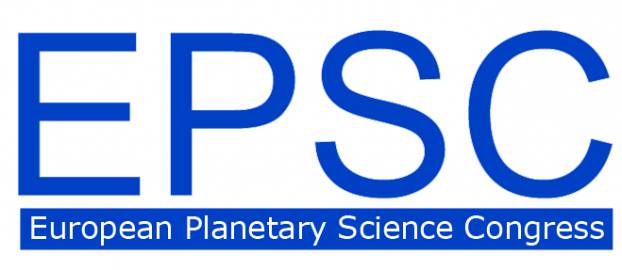EuroVenus at EPSC 2015

October 01st, 2015
Today saw the Venus session at the European Planetary Science Congress, held this year in Nantes, France. EuroVenus research was heavily represented, in the following 14 presentations:
- The inversion layer at the tropopause of the Venus atmosphere: new insights from the Radio Science Experiment (VeRa) onboard Venus Express
- Thermal Structure of Venus' Dayside in 110 km Altitude Based on Ground-Based Heterodyne Observations Between 2007 and 2014
- Cloud tracked winds at the lower cloud level using Venus’ night side observations at 2.28 μm with TNG/NICS
- Long-term Variation of Temperature and Dynamic at the Morning Terminator in Venus Upper Atmosphere from Ground-Based Infrared Heterodyne Spectroscopy
- A compilation of all CO observations performed by SOIR during the Venus Express mission
- Thermal structure and minor species of Venus mesosphere by ALMA submm ground-based observations
- Variability of SO2 and HDO at the cloudtop of Venus from high-resolution infrared spectroscopy
- Improved Knowlegde of Venus Atmospheric Structure
- Studying the Venus terminator thermal structure observed by SOIR/VEx with a 1D radiative transfer model
- Context images for Venus Express radio occultations: a search for a dynamical-convective origin of cloud-top UV contrasts
- Ground and space based cloud-top wind velocities using CFHT/ESPaDOnS (Doppler velocimetry) and VEx/VIRTIS (cloud tracking) coordinated measurements
- Sulfur Dioxide variability in the Venus Atmosphere
- The vertical density profile of the mesosphere of Venus by independent measurements from SPICAV/SOIR and aureole photometry
- The clouds of Venus - an overview of Venus Express results
We are also delighted to hear today that NASA has selected not one but two Venus mission concepts for further study and possible launch around 2021. Onward to Venus!
- The inversion layer at the tropopause of the Venus atmosphere: new insights from the Radio Science Experiment (VeRa) onboard Venus Express
- Thermal Structure of Venus' Dayside in 110 km Altitude Based on Ground-Based Heterodyne Observations Between 2007 and 2014
- Cloud tracked winds at the lower cloud level using Venus’ night side observations at 2.28 μm with TNG/NICS
- Long-term Variation of Temperature and Dynamic at the Morning Terminator in Venus Upper Atmosphere from Ground-Based Infrared Heterodyne Spectroscopy
- A compilation of all CO observations performed by SOIR during the Venus Express mission
- Thermal structure and minor species of Venus mesosphere by ALMA submm ground-based observations
- Variability of SO2 and HDO at the cloudtop of Venus from high-resolution infrared spectroscopy
- Improved Knowlegde of Venus Atmospheric Structure
- Studying the Venus terminator thermal structure observed by SOIR/VEx with a 1D radiative transfer model
- Context images for Venus Express radio occultations: a search for a dynamical-convective origin of cloud-top UV contrasts
- Ground and space based cloud-top wind velocities using CFHT/ESPaDOnS (Doppler velocimetry) and VEx/VIRTIS (cloud tracking) coordinated measurements
- Sulfur Dioxide variability in the Venus Atmosphere
- The vertical density profile of the mesosphere of Venus by independent measurements from SPICAV/SOIR and aureole photometry
- The clouds of Venus - an overview of Venus Express results
We are also delighted to hear today that NASA has selected not one but two Venus mission concepts for further study and possible launch around 2021. Onward to Venus!

